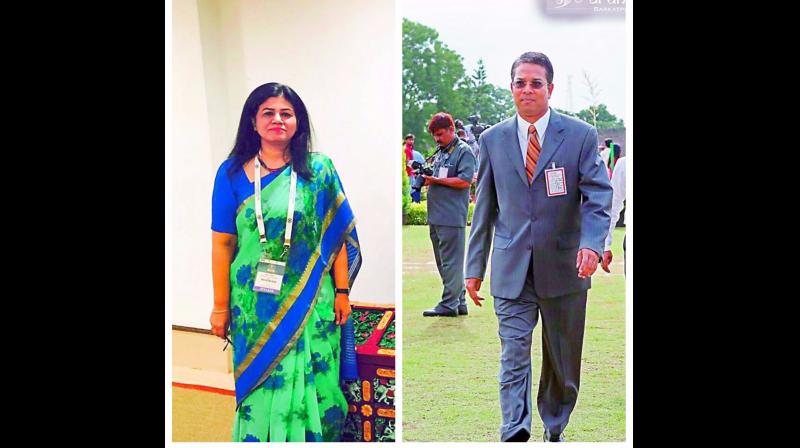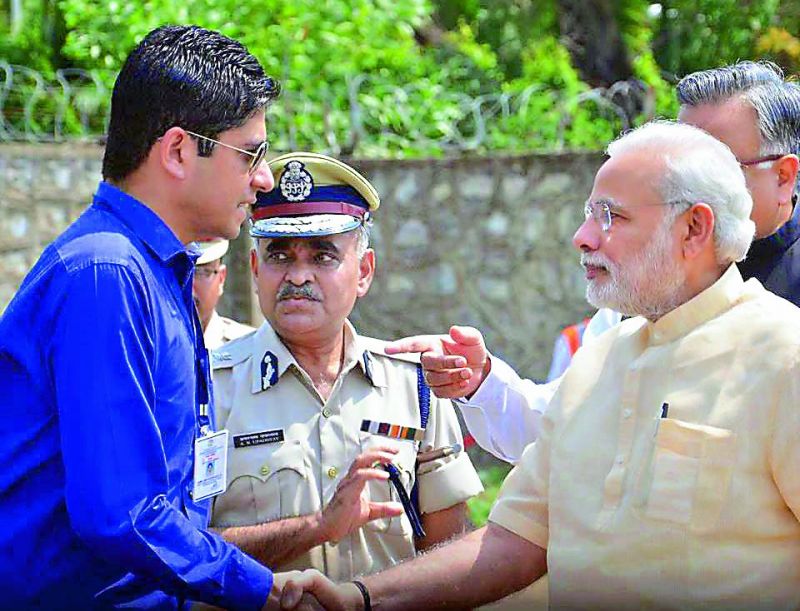Dress and the dutiful
When on duty, bureaucrats are expected to be dressed in formal, traditional attire.

Bureaucrats seldom have it easy. They are often dealing with many a difficult situation — stressful jobs, morchas and aggressive groups making unreasonable demands. On top of everything they have to do, they are also required to abide by a dress code to show their deference to authority and maintain decorum.
Recently, Bihar Chief Secretary Anjani Kumar Singh got a dressing down from the Supreme Court for not appearing before it in formal clothing. In another incident, a Telangana State Collector was criticised for wearing a sleeveless shirt and trousers when she was visiting a tribal village along with other Collectors.
“The concept of a ‘dress code’ was probably part of some rule that said they (bureaucrats) should be decently dressed. Obviously, they know they have to be properly dressed at official functions, but there is no definition as such. Everybody has the right to wear what they are comfortable in. It’s high time one gets away from hierarchies as we are not in a monarchy or dictatorship,” says IAS officer V. Kalyan Chakravarthy, Director-General at EPTRI, Telangana State Government.
He adds, “Ours is an evolving democracy. In about 50 or 100 years from now, these dress codes will not remain. In fact, it violates freedom of expression, existence and liberty if you tell them ‘you should only wear this’.”
Interestingly, the government had prescribed a dress code for bureaucrats on June 24, 1954, but they gradually started to ignore the circular and dress as per their choice.
The dress code is mentioned in the “joining instructions” at the Lal Bahadur Shastri National Academy of Administration (LBSNAA), where IAS officers are trained.
 In 2015, two IAS officers in Chhattisgarh were reprimanded for not wearing suits and for wearing sunglasses while receiving Prime Minister Narendra Modi.
In 2015, two IAS officers in Chhattisgarh were reprimanded for not wearing suits and for wearing sunglasses while receiving Prime Minister Narendra Modi.
No specific rules
Even though there is no stipulated dress code, one is expected to dress appropriately for the occasion,” says senior IAS officer P.V. Ramesh, CMD Rural Electrification Corp (REC).
“Dress code is inculcated during training at LBSNAA. We do have a dress code for the UPSC interview and formal occasions — bandhgala for men with proper leather shoes and sari for women. Now, salwar suits are also kind of acceptable,” says IAS officer Sumita Dawra, Principal Secretary to the Government of Andhra Pradesh Transport, Roads and Buildings Department.
“One cannot be rigid about this, as dress must be conducive to the working conditions and contribute to productivity. When I am at my desk in the Secretariat, I prefer saris that are simple and sober. However, on days I have field inspections, I may opt for a salwar suit for convenience and mobility, especially as I may encounter all kinds of terrain and weather conditions,” says Sumita. She adds, “But before high-level dignitaries, I am careful and meticulous about my attire as that sends out a message about me as a public servant. Even if I have to go to the villages, I select a simple cotton sari.”
The concept of a ‘dress code’ was probably part of some rule that said they (bureaucrats) should be decently dressed. Obviously, they know they have to be properly dressed at official functions, but there is no definition as such. Everybody has the right to wear what they are comfortable in. It’s high time one gets away from hierarchies as we are not in a monarchy or
dictatorship”
IAS officer V. Kalyan Chakravarthy,
Director-General at EPTRI, Telangana Government
One cannot be rigid about this, as dress must be conducive to the working conditions. When I am at my desk in the Secretariat, I prefer saris that are simple and sober. However, on days I have field inspections, I may opt for a salwar suit for convenience and mobility”
Sumita Dawra, Principal Secretary to the Government of Andhra Pradesh Transport, Roads and Buildings Department
Dressing down
- Recently, Bihar Chief Secretary Anjani Kumar Singh got a dressing down from the Supreme Court for not appearing before it in formal clothing.
- In another incident, a Telangana Collector was criticised by her colleagues as she was wearing a sleeveless shirt and pants while visiting a tribal villages.​
- When the Deputy Commissioner of Ballari district went to receive the then Governor A.N. Bannerjee in 1985, he was asked to go back as he was not wearing a bandhgala, the prescribed dress code.
A formality
A dress code reveals the decorum of the office you are holding and should suit climatic conditions. Earlier, we used to wear a buttoned-up coat, the bandhgala, but now even a lounge suit is acceptable,” says Vikas Raj, Principal Secretary, Irrigation.
Secretary, Finance, Sandeep Kumar Sultania adds, “On any formal occasion, when you meet a CM, PM or member of the judiciary, one is expected to wear a suit with a tie or a Jodhpuri bandhgala coat. But there are no specific orders on sunglasses.”
So, why is the dress code so important then? Sunil Sharma, Principal Secretary, Transport, Roads and Buildings, Telangana Government, says, “Dress codes are meant to show our respect and reverence towards authority.”

